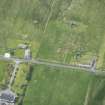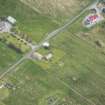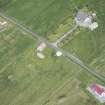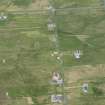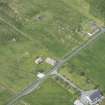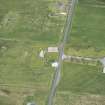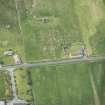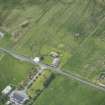Skye, Bornesketaig, No. 40, Beaton's Cottage, Byre
Byre (Period Unassigned)
Site Name Skye, Bornesketaig, No. 40, Beaton's Cottage, Byre
Classification Byre (Period Unassigned)
Canmore ID 276030
Site Number NG37SE 17.01
NGR NG 37801 70729
Datum OSGB36 - NGR
Permalink http://canmore.org.uk/site/276030
- Council Highland
- Parish Kilmuir
- Former Region Highland
- Former District Skye And Lochalsh
- Former County Inverness-shire
40 Bornesketaig (better known as Beaton's Cottage), c.1880. Croft house, re-thatched with rushes and reconstructed internally for holiday accommodation by The National Trust for Scotland, 1999. A rare surviving example of traditional Skye dwelling, built along with three others (now ruinous) for the Gillies brothers and occupied until 1980. Contemporary thatched and cobbled byre, with remarkably complete stalls, drains and collection of old wooden-handled implements.
Taken from "Western Seaboard: An Illustrated Architectural Guide", by Mary Miers, 2007. Published by the Rutland Press http://www.rias.org.uk
NG37SE 17.01 37801 70729
Field Visit (16 October 2014)
NG 37805 70731 Single storey byre, part of a group listing with a 19th century croft building (Beaton’s Cottage). Both buildings are owned and managed by the National Trust for Scotland, the croft being let out as holiday accomodation. The rush-thatched roof of the byre has a continuous thatched ridge and is entirely netted. The netting is weighted at the eaves with stones, tied to the netting with wire. In three locations around the building a metal pole has been used to weight down the netting at the eaves, which some of the stones have been tied onto. There is a small amount of vegetation growth across the surface of the thatch, particularly above one of the door openings where there is a large patch of grass growing from the thatch just above the eaves.
Visited by Zoe Herbert (SPAB) 16 October 2014, survey no.102



































